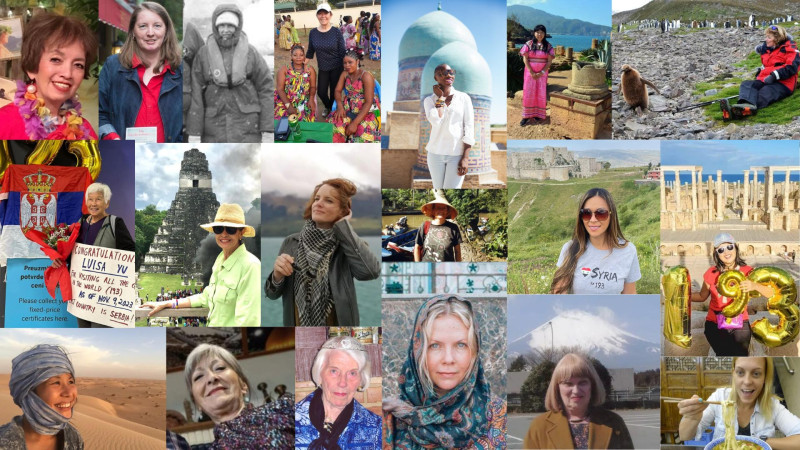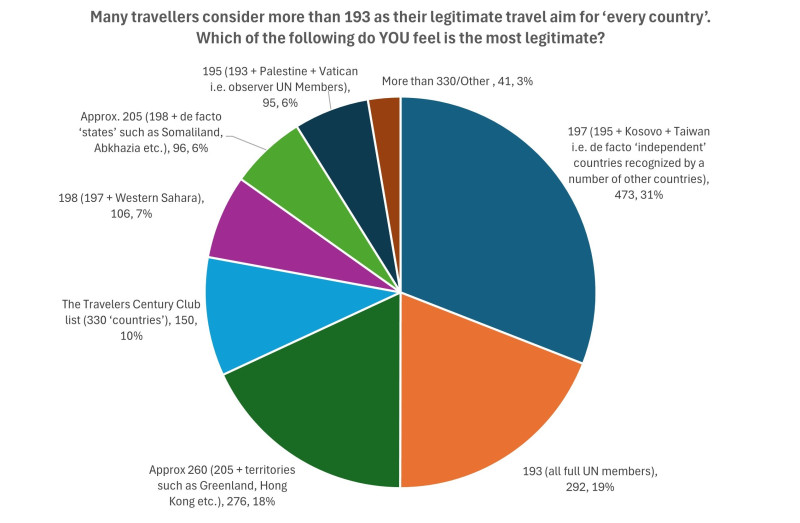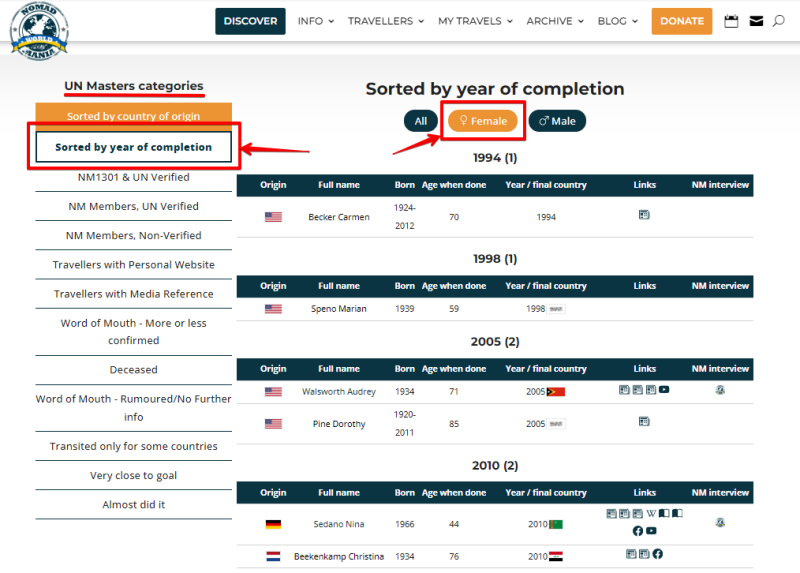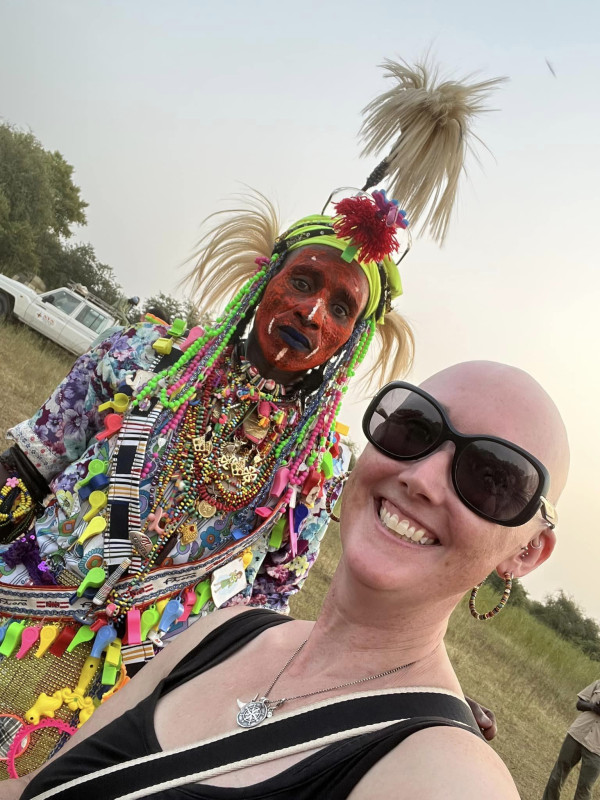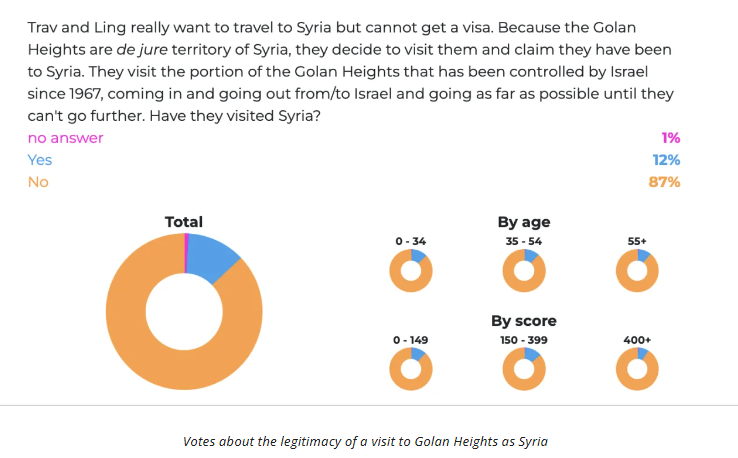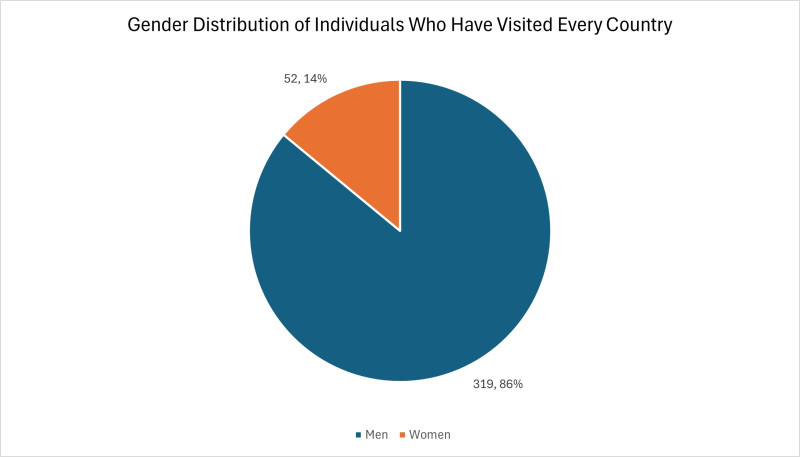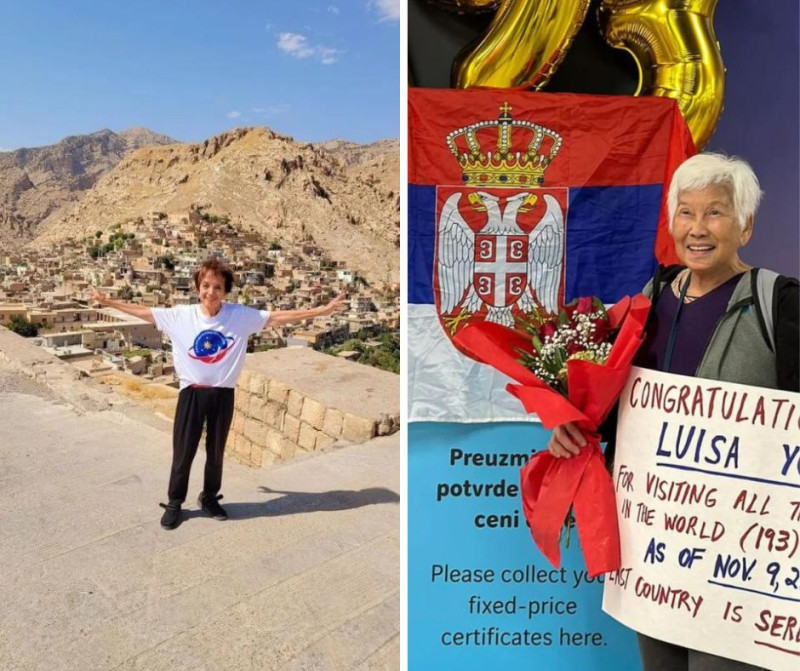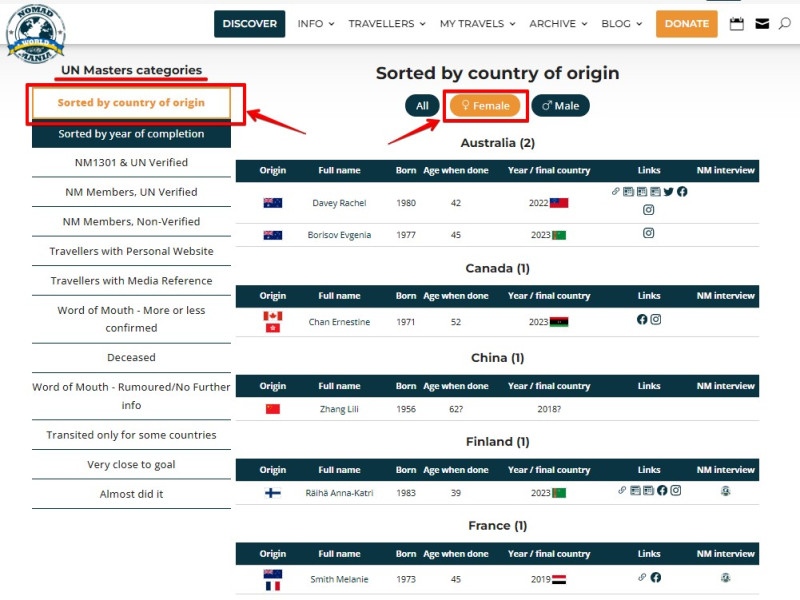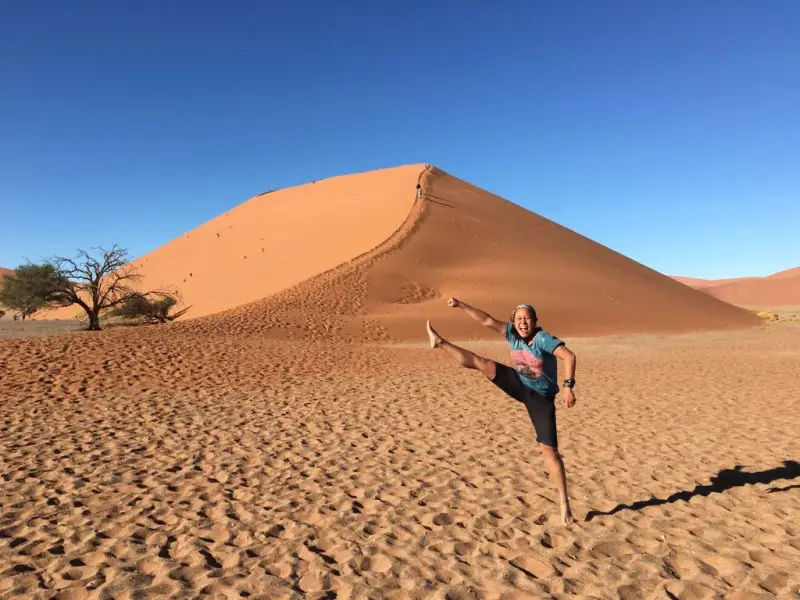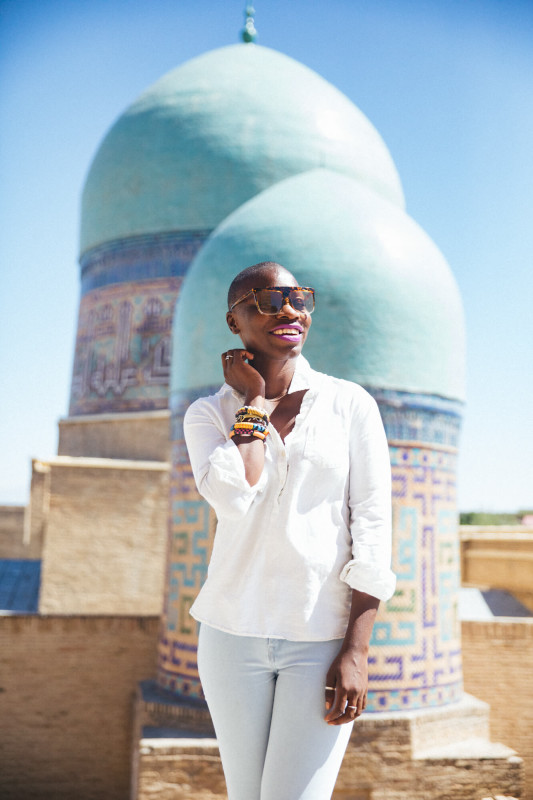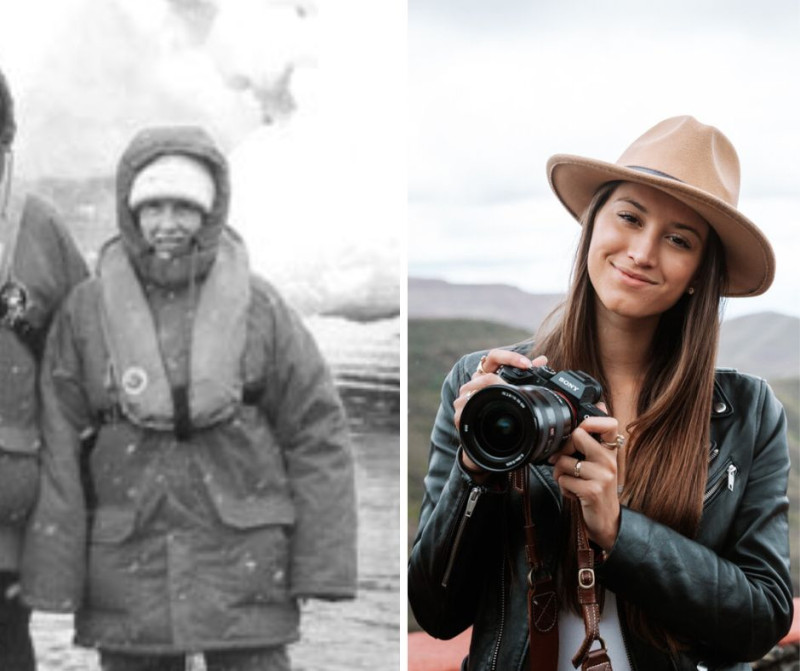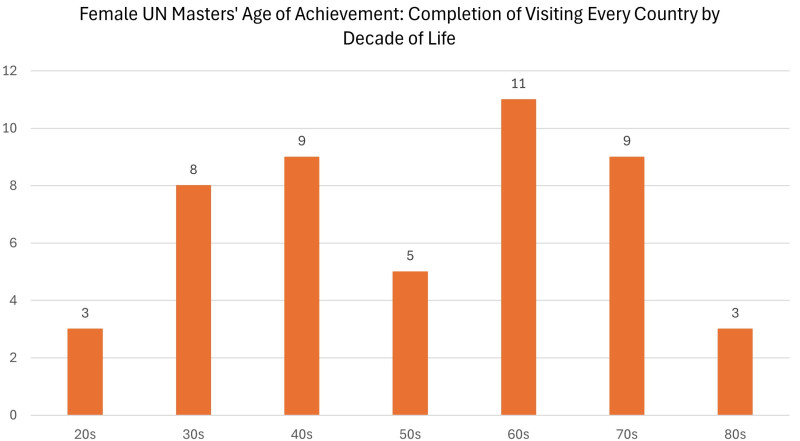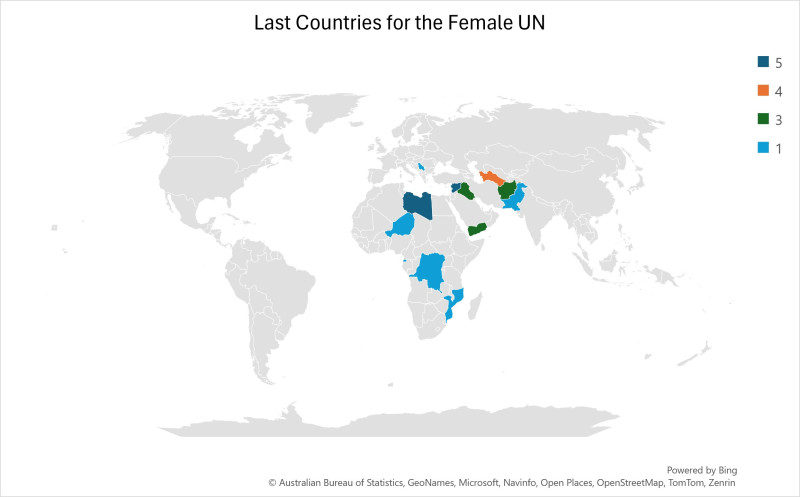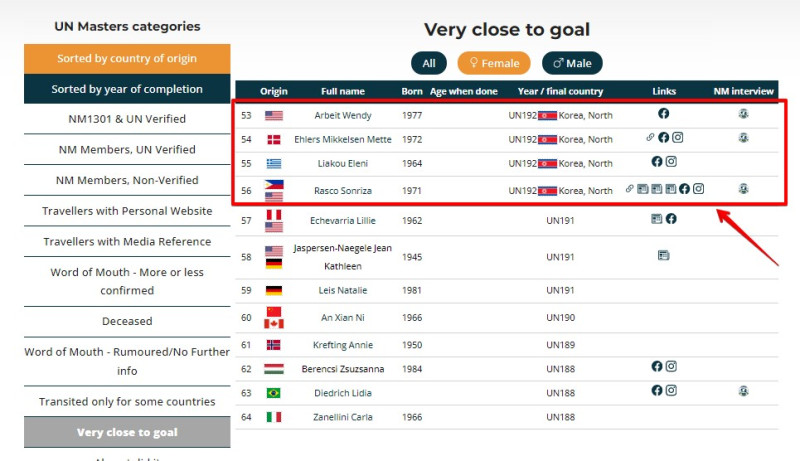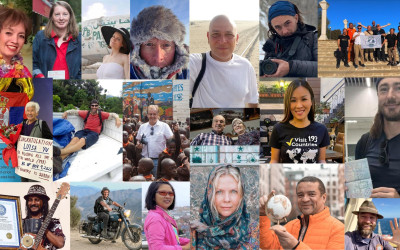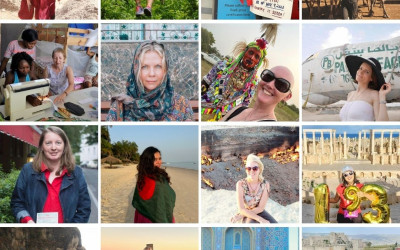The idea of visiting every country is fascinating to many travellers. But what about the women who have visited every country? What percentage of the whole do they constitute, and what are their specific demographic characteristics?
In this report, we will focus on Female UN Masters. Please note the following:
- NomadMania has strict rules for accepting claims of visitation to every country. We have decided, for the purpose of these reports, to consider the claims themselves rather than NomadMania’s acceptance or rejection of them, based on our rules for what constitutes a visit. Occasionally, we refer to how these affect our statistics.
- We have made assumptions about gender identity ourselves and include all people who we believe identify as female. We hope we have not made errors in terms of gender identity, to the best of our understanding.
- The same applies to ethnicity, to the best of our understanding.
The Concept of ‘Visiting Every Country’
We must remember that the idea of visiting every country is by no means fixed. If we look historically at the number of countries, there have been many developments.
In 1939, there were only 73 sovereign countries; in 1959, there were around 20 more; and then in the 1960s there was an explosion of ‘new’ countries; by 1972, we can count 148 countries. As recently as 1950, only 4 countries in Africa were independent, compared to today’s 54! Following the independence of a few Caribbean and Pacific states in the late 1970s and 1980s, and the collapse of the Soviet Union and Yugoslavia in the early 1990s, there seem to be very few ‘new’ countries since 1994.
For our analysis below, we are taking the current 193 United Nations members as constituting ‘every country’ but note that those who completed all countries according to the total when they completed them are accepted as having achieved the feat.
NomadMania’s Poll on Visiting Every Country showed our community’s different opinions on “what visiting every country” means
In the period since the early 20th century, countries gained independence frequently; the longest interval since 1898, when the Philippines achieved their sovereignty, was 11 years between 1932 (Iraq) and 1943 (Lebanon). Until now, that is. The current period of 13 years since South Sudan became independent in 2011 is the longest without a ‘new country’ since the end of the 19th century i.e. for more than 125 years.
For a lot of us, the creation of a new internationally recognized sovereign country which will allow us to talk of 194 will be really big news.
History of Women Visiting Every Country
It is difficult to find reliable information on the first women travellers to visit every country. But we have tried to identify some ‘firsts’ to the best of our understanding; a few of these are not confirmed so this is not to be taken as definitive information. We welcome contributions that can help improve this list.
Once again, we are not commenting on the authenticity of the claims below but in our UN Masters List, the claims that NomadMania believes to include ‘transits’ or visits that are not acceptable to us are identified.
The first person to visit every country was Rauli Virtanen from Finland in 1988.
It would take six more years for the first claim by a woman.
See our Female UN Master List (sorted by year of completion)
NomadMania’s Female UN Master List (sorted by year of completion)
1994: Carmen Becker (US) – First woman to claim a visit to every country, travelling with her husband Robert Becker.
1998: Marian Speno (US) – First woman to claim a visit to every country travelling solo.
2005: Dorothy Pine (US) – The oldest person to claim a visit to every country, visiting the last one at the age of 85 (age record still valid today).
2010: Nina Sedano (Germany) and Christina Beekenkamp (Netherlands) – First non-US women to claim a visit to every country. As we do not know the month of their visit to their last country, we are listing them both.
2013: Cathy Parda (US) – First woman of Asian origin to claim a visit to every country.
2016: Nadezhda Lazareva (Russia) – First woman from Eastern Europe and a former socialist country to claim a visit to every country.
2017: Yui Pow Redford (Singapore) – First woman citizen of an Asian country to claim a visit to every country.
2017: Cassie de Pecol (US) – Claimed to be the first documented woman to visit every country; also, the youngest claim at the time, at the age of 27.
2018: Ildiko Szabo (Hungary) – Youngest non-US female passport holder to claim a visit to every country, at the age of 36 (age record still valid today).
Ildiko Szabo (Hungary) was the youngest non-US female passport holder to claim a visit to every country, at the age of 36 (age record still valid today).
2018: Taylor Demonbreun (US) – Fastest woman to claim a visit to every country (one year and 189 days)
2018: Lili Zhang (China): First Chinese woman to claim a visit to every country.
2019: Lexie Alford (US): Youngest woman to claim a visit to every country, at the age of 21.
2019: Britt-Marie Boudrie (Sweden): First Scandinavian woman to claim a visit to every country.
2019: Jessica Nabongo (US/Uganda): First African-American woman to claim a visit to every country.
2019: Melissa Roy (US): First woman with origin from the Indian subcontinent to claim a visit to every country.
2019: Melanie Smith (New Zealand) – First woman from Oceania to claim a visit to every country.
2020: Gina Morello (US): First person to claim a visit to every country during the pandemic.
2022: Rachel Davey (Australia): First Australian woman to claim a visit to every country.
2023: Magali Hinojosa (Mexico/US): First Hispanic woman to claim a visit to every country.
2023: Ernestine Chan (Canada/Hong Kong): First woman citizen of Canada (as well as Hong Kong) to claim a visit to every country.
2023: Hayley Kennedy (UK): First person with a disability to claim a visit to every country.
Hayley Kennedy is the first person with a disability to claim a visit to every country, finishing in 2023 in Libya.
How many women have done it?
The inevitable question of ‘how many’ runs into a lot of obvious issues. To name a few:
- Many people are under the radar for many reasons (i.e. privacy concerns, not being particularly sociable or just not on social media at all) and do not want to be known, or are not aware of travel communities like ours, so we can’t reach them.
- Women may be much less ‘boastful’ about their achievements than men, as mentioned by one of our respondents in our ‘Women in Travel’ poll. One NomadMania member ‘discovered’ a woman who is a UN Master on a boat trip, otherwise, we would have never known she existed.
- The eternal question of ‘what counts as a visit’ will lead to different interpretations of the number. Following our NomadMania polls on ‘what is a visit’ in 2022 and 2023, visits to the DMZ as North Korea or the Golan Heights as Syria are rejected by the vast majority of the NomadMania community.
However, both Guinness and the TCC have invariably accepted such visits in the past, it would seem. For this reason, we note people we know have claimed 193 in this way in a special rubric in our UN Masters list, but our general numbers are based on the claim itself rather than our interpretation of the claim.
NomadMania has conducted two community polls on ‘what is a visit’ in 2022 and 2023
Ultimately, if we include every woman we know of with a claim, we get a total of 52 women. This compares to a known total of claims of 371 people overall, which means women UN Masters make up 14% of the total.
However, in 2023, we had the highest overall number of female UN Masters (14) as well as the highest percentage compared to the total of 51 UN Masters (27.4%).
Comparing to a known total of claims of 371 people overall, women UN Masters make up 14% of the total.
We can assume that we may be ‘missing’ around 20% of the total number, but even in this case, the number doesn’t exceed 70 women overall who have been to every country in the world.
If we take a strict NomadMania approach and demand visits according to the criteria of the community poll that was made and accepted by us, the real number we know of that NomadMania can accept is perhaps around 45.
Nationalities of the UN Masters
To the best of our knowledge, there are still no women UN Master claims from South America or the Middle East. Likewise, there are no women UN Master claims from India or Brazil.
In Europe, there are no women UN Masters in countries with a considerable number of male UN Masters, such as Denmark, Italy, Norway, Poland, and Portugal. In France the only female UN Master we know of is by marriage (New Zealand-born); in Spain, there is only one female UN Masters compared to 13 men; in Germany, there are 2 female UN Masters compared to 28 men.
Conversely, there are only female UN Masters from Latvia (Liga Lemberga), the Philippines (Odette RIcasa and Luisa Yu, both with a US passport as well) and Mexico as listed above.
Female travellers Odette RIcasa and Luisa Yu, are the only UN Masters from the Philippines (both with a US passport as well).
In terms of the total nationalities of women UN Masters, we can identify the following 22 countries. This implies that only 11% of the world’s countries have a female UN Master.
Australia
Canada (dual citizen)
China (including Hong Kong)
Finland
France (dual citizen by marriage)
Germany
Hungary
Japan
Latvia
Malaysia
Mexico (dual citizen)
Netherlands
New Zealand
Philippines (dual citizens)
Russia
Singapore
Slovakia
Spain
Sweden
Uganda (dual citizen)
United Kingdom
United States
NomadMania’s Female UN Master List (sorted by the country of origin)
The indisputable champion in terms of country of origin is the United States, with 27 female US passport holders claiming 193 – that’s about 52% of the total. In distant second place is the UK, with 6 female UK passport holders making this claim. Interestingly, 3 of these reached 193 in quick succession in the latter months of 2023.
Looking at female travellers from Low Passport Index countries who do NOT have a second passport, we can only find one Chinese citizen in the list and we believe she is at least resident in the US. There are no LPI women UN Masters apart from that that we know of.
The biggest countries by population with no female UN master claims are India, Indonesia and Pakistan. The smallest with a UN Master is Latvia.
The biggest country in terms of territory with no female UN Master is Brazil; the smallest in terms of territory with a claim is Singapore.
Singapore is the smallest country in terms of territory to have a female UN Master. Yui Pow Redford was the first woman citizen of an Asian country to claim a visit to every country.
The highest-ranked countries in the Human Development Index where we don’t know of a female UN Master are the Top 3: Switzerland, Norway and Iceland; in all of these, there is more than one male UN Master.
Ethnicity of the female UN Masters
Ethnicity is a very complex issue whose definition is outside the scope of this analysis; we will deliberately oversimplify here just to illustrate a few trends and we ask for understanding for our oversimplifications. We also note that NomadMania does not collect ethnicity data, so our analysis is based on our understanding rather than on ethnicity statements by the people in question who may have other ideas if asked about their ethnicity.
In terms of the naming of ethnicities, we will apply the UK standard classification as used in the 2021 UK Census (where ‘White’ is commonly used, as is ‘Black, Black British, Caribbean or African’ for people from a Caribbean, African or Black British background, while ‘Asian’ is used to include all ethnicities from the Indian subcontinent and further East within Asia; no offence is meant in case of differences in terminology in different areas of the world.
In general, we believe that, of 52 female UN Masters, 8 are not white, which is a bit more than 15%. This is slightly higher than the average of 13% if we take men and women together.
Jessica Nabongo is the first African-American woman to claim a visit to every country.
We believe there are (approximately) the following women UN Masters:
- 1 Black, Caribbean or African
- 1 UN Master with an Indian/Pakistani/Bangladeshi Asian background
- 6 with a Chinese or other Asian background not including the above.
Of the 27 female United States citizens claiming 193, we identify 6 who are not white to the best of our understanding, which is 22.2%. Interestingly, this is much higher than the around 13% of the cumulative number including men, which implies there is greater diversity in the ethnicity of the female UN Masters from the United States.
Ages of Female UN Masters
The data for this is relatively uniform between the genders, with an average age of completion of 53 overall and 56 for women.
However, for women, there are some interesting discrepancies by nationality. Non-US women passport holders have an average age of completion of 52. The age for US passport holders is 58.
However, if we take away those who we believe have not followed the NomadMania rules of visit, then the average age overall goes up to 60 while for the US passport holders alone, it goes up to 66 years of age.
Dorothy Pine (US), the oldest person to claim a visit to every country, visiting the last one at the age of 85 (age record still valid today) and Lexie Alford (US), the youngest woman to claim a visit to every country, at the age of 21.
This generally implies that except for a few younger women who sometimes claim a certain record, the average age of women UN Masters is higher than the average for men and women together, especially for US passport holders.
Overall, if we only look at claims, we have the following (we are lacking data for a few cases):
- 20s: 3
- 30s: 8
- 40s: 9
- 50s: 5
- 60s: 11
- 70s: 9
- 80s: 3
We can conclude that for women, visiting every country is, for the most part, something that is achieved after their mid-30s, and with the median being the 60s, it seems that women take their time as they seek to visit every country.
Female UN Masters’ Age of Achievement: Completion of VIsiting Every Country by Decade of Life
Let’s focus on the past 4 years i.e. as of 2020. There are 23 female UN Masters who have completed in the past 4 years, which makes almost 45% of the total number. In itself, this is indicative of the trend of many more women completing a visit to every country.
The female UN Masters completing since 2020 are of the following age ranges:
- 30s: 2
- 40s: 7
- 50s: 2
- 60s: 5
- 70s: 5
- 80s: 1
- No age info: 1
There have been no claims for women UN Masters in their 20s in the past 4 years that we know of.
Moreover, of the 12 who we note to be very close to the goal, only one is in her early 30s at this moment, with the others being 39 years of age or above. This generally supports the idea that the average age of completing every country for women is older than the average for men and can have interesting implications for the reasons behind the motivations for visiting every country.
The Last UN Country
Since NomadMania does keep data on a UN Master’s last visited country, it is worthwhile finding trends in that. Which countries are generally chosen by women as their last?
The data here is quite uniform with the overall data we have. Libya and Syria both emerge as ‘champions’ of the choice for last country, with 5 women each visiting them last. Turkmenistan was also the last for 4 women, primarily as it was late to open from the pandemic in early 2023 – 3 of the women UN Masters in 2023 ended their quest in Turkmenistan. Afghanistan, Iraq and Yemen also feature several times.
Libya and Syria are the most popular “last countries” for the female travellers, with 5 women each visiting them last. Here: Lucy Hsu in Syria.
Only a few of the women appear to complete their feat in an ‘easy’ country, though several less visited Pacific destinations, such as Palau, Samoa or the Marshall Islands are occasionally on the list.
Apart from Libya, there are very few mentions of other African countries as last. Only DR Congo, Niger and Equatorial Guinea feature on the list, as well as ‘easy’ Seychelles.
Other countries listed include Pakistan, Mozambique and even Serbia.
Last Countries for the Female UN Masters with the number of women visiting them last.
We are not sure what this implies for the overall choices of women in terms of where to complete their quest of visiting every country. Probably a greater sample is needed for us to be able to reach definitive conclusions.
Conclusions and Expectations
The common profile of a UN Master as an older white male may generally be correct, however, things are changing in recent years and we see a higher percentage of women, especially in 2023. In the first quarter of 2024, it is notable that there has only been one claim from a woman compared to 10 men that we know of.
Many more women are attempting to reach 193 and we expect if not a total equalization of genders, at least a much higher percentage than only 14% of the overall total. There are four women that we know of who are only missing North Korea to reach 193!
There are four women that we know of who are only missing North Korea to become UN Master
Yet, it seems that there still is very high gender inequality in Low Passport Index countries or countries with fewer UN Masters overall. And not only LPI. There are no or very few women UN Masters from certain European countries; in the whole of Southern Europe, we only find one UN Master (Mayte Galindo from Spain, who completed 193 with her husband last year).
This is despite a very active traveller community in Portugal and 9 male UN Masters in Italy, for example. But even in Denmark or Norway, there are no female UN Masters while in Finland, with its record per population of 17 UN Masters, there is only one.
NomadMania’s latest “Women in Travel” poll, 79% of the people surveyed say travelling is harder for women than for men. Yet, we expect if not a total equalization of genders, at least a much higher percentage than only 14% of the overall total.
This implies that overall gender stereotypes in terms of travelling to every country certainly do persist and the fact that there are only female UN Masters from countries like the Philippines or Latvia is perhaps more due to the persistence of the specific individuals involved rather than indicative of a greater trend.
It would be great to see what this report would look like if it were published, say, in 2030, or 2050. What percentage of UN Masters will be women in the future?
